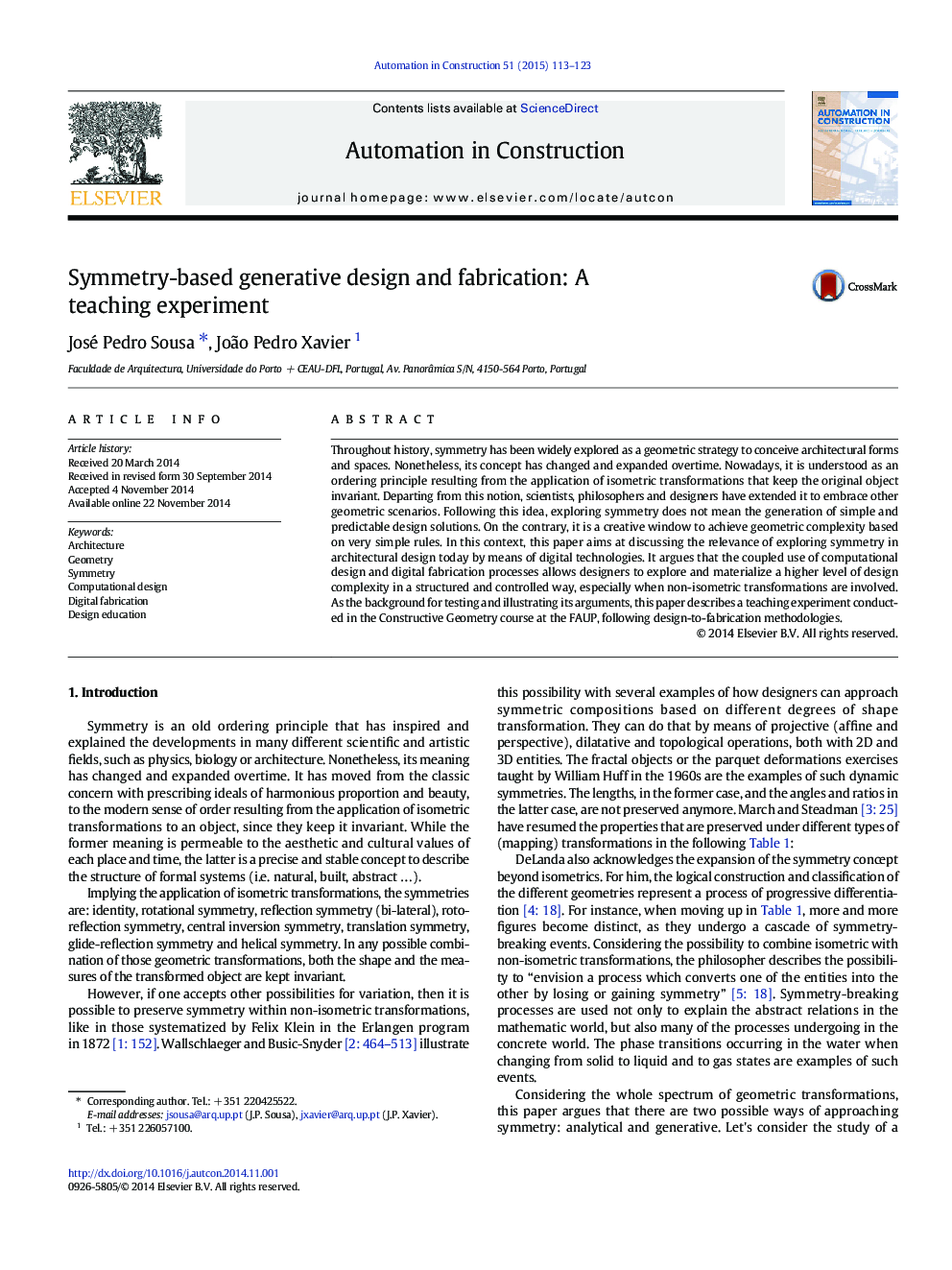| Article ID | Journal | Published Year | Pages | File Type |
|---|---|---|---|---|
| 246414 | Automation in Construction | 2015 | 11 Pages |
•The concept of symmetry has changed and expanded overtime.•Symmetry has a strong tradition in architecture.•Computational design expands the use of symmetry in design.•Digital fabrication is essential to materialize non-isometric symmetries.•Architectural projects can benefit from symmetry-based generative design.
Throughout history, symmetry has been widely explored as a geometric strategy to conceive architectural forms and spaces. Nonetheless, its concept has changed and expanded overtime. Nowadays, it is understood as an ordering principle resulting from the application of isometric transformations that keep the original object invariant. Departing from this notion, scientists, philosophers and designers have extended it to embrace other geometric scenarios. Following this idea, exploring symmetry does not mean the generation of simple and predictable design solutions. On the contrary, it is a creative window to achieve geometric complexity based on very simple rules. In this context, this paper aims at discussing the relevance of exploring symmetry in architectural design today by means of digital technologies. It argues that the coupled use of computational design and digital fabrication processes allows designers to explore and materialize a higher level of design complexity in a structured and controlled way, especially when non-isometric transformations are involved. As the background for testing and illustrating its arguments, this paper describes a teaching experiment conducted in the Constructive Geometry course at the FAUP, following design-to-fabrication methodologies.
